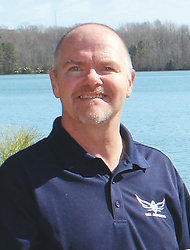The Hampton Roads area is a challenging place to fly a drone, especially for commercial projects. With several military airfields, Norfolk International Airport, small airports, and heliports, about 50 percent of the area is officially off-limits for drone flights.
Thanks to several publicized incidents over the last few months involving drones flying near airports and other restricted areas, things are getting stricter and more limited, and, hopefully, safer.
In late 2018, the FAA announced that it will introduce new rules for drones, and become more proactive with policing and enforcing the rules. In preparation, a new regulation regarding drone identification came into effect. All drones must now clearly display their FAA identification number on them. This and new FAA database lookup tools make it easier for law enforcement to immediately tell who is trying to fly under-the-radar. The FAA receives over 100 such reports a month.

With penalties of up to $20,000 for people flying illegally themselves,
and for the person who hired them, hopefully, people will think twice
about hiring an illegal, uninsured drone pilot.
for people flying illegally themselves,
and for the person who hired them,
hopefully, people will think twice about
hiring an illegal, uninsured drone pilot.
Because there are also so many drone accidents, (just search YouTube for 'drone crash compilation'), the FAA is expected to introduce a basic testing and certification procedure for recreational pilots.
Luckily, for those of us who are FAA licensed, flights are getting faster and easier with fewer hoops we have to jump through. Previously, if you were a commercial pilot needing to fly in a restricted zone, you had to call the air traffic control tower, identify yourself and inform them of all the details of your flight. In addition, those using DJI drones sometimes had to unlock the flying area by having a code that had to be entered sent to their phones.
The FAA has rolled out a new system called LAANC - Low Altitude Authorization and Notification Capability, which allows licensed drone pilots to obtain almost immediate permission for FAA controlled no-fly zones through a mobile application.
The application communicates with the tower and the FAA database registration. After answering questions about the intended flight, it generates an authorization code to allow the flight.
Several things have to be considered when you're using aerial photos and video to promote yourself. This is where an experienced, licensed and insured photographer can really make you stand out from the crowd.
Terry Young is an FAA licensed drone pilot and professional photographer and videographer. His 30 plus years of experience in pre- and post-production of both still photography and video, coupled with the latest equipment, enable him to capture amazing, high quality images.


